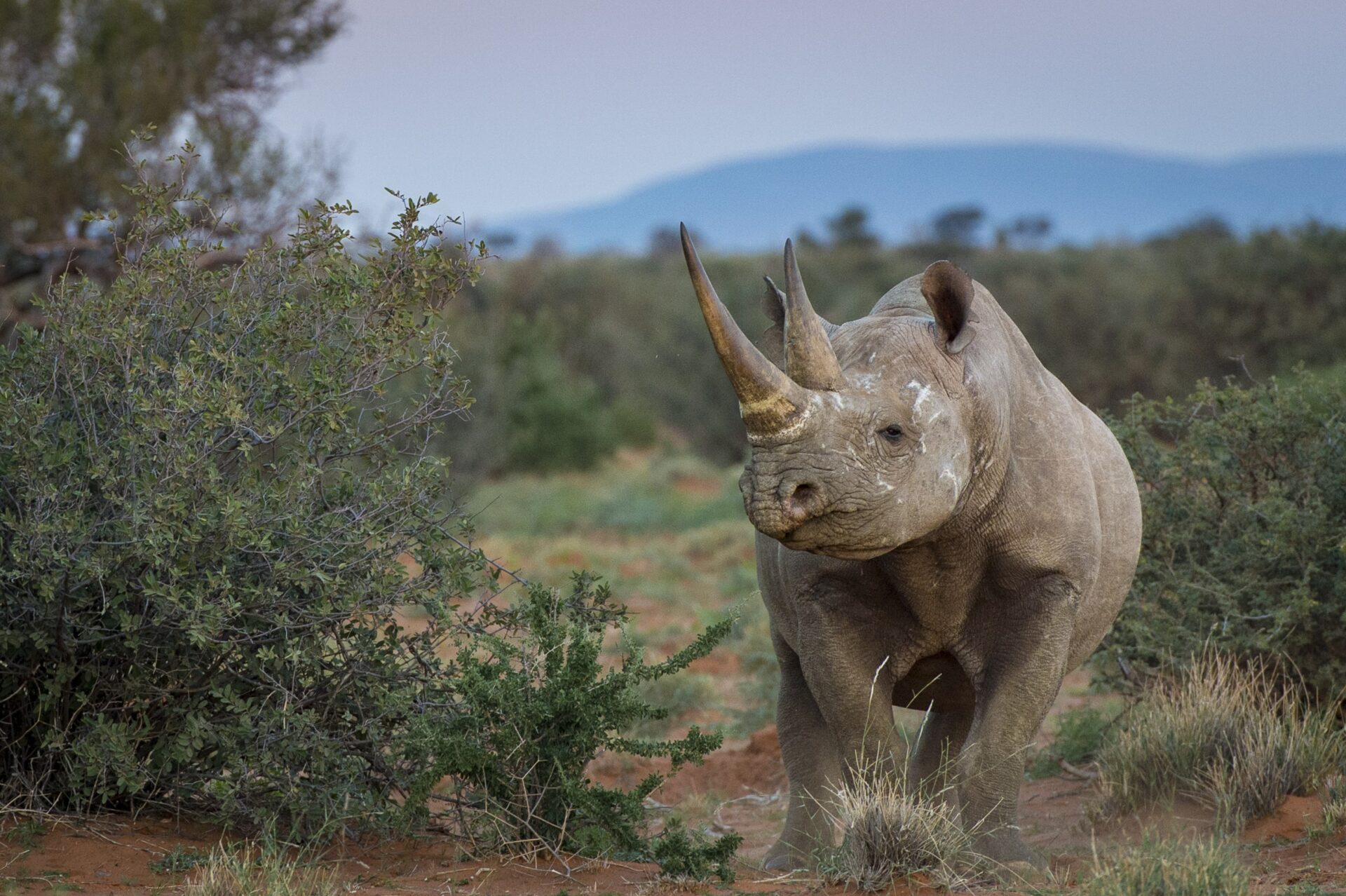New black rhino research at Tswalu
Our research, recently published in Ecology and Evolution, is the first to demonstrate that black rhinos play a role in the germination of camel thorn trees (Vachellia erioloba) in the Kalahari. Endozoochory – the scientific term for the dispersal of seeds by animals – by black rhinos enhances germination of this key arid savannah tree species. This study formed part of my MSc in Botany, undertaken at Tswalu, and supported by a full research grant from the Oppenheimer Memorial Trust.
Desert black rhinos (Diceros bicornis bicornis) were reintroduced to Tswalu from Etosha National Park in neighbouring Namibia in 1995. Today black rhinos serve as a flagship species for conservation on the reserve. The Tswalu Foundation had identified the need for a new black rhino study on the property, since the last and only project was a PhD conducted by Dr Joe Shaw in 2011. I had undertaken my Honours degree studying sociable weaverbirds at Tswalu the previous year (2021) and became the fortunate MSc candidate.
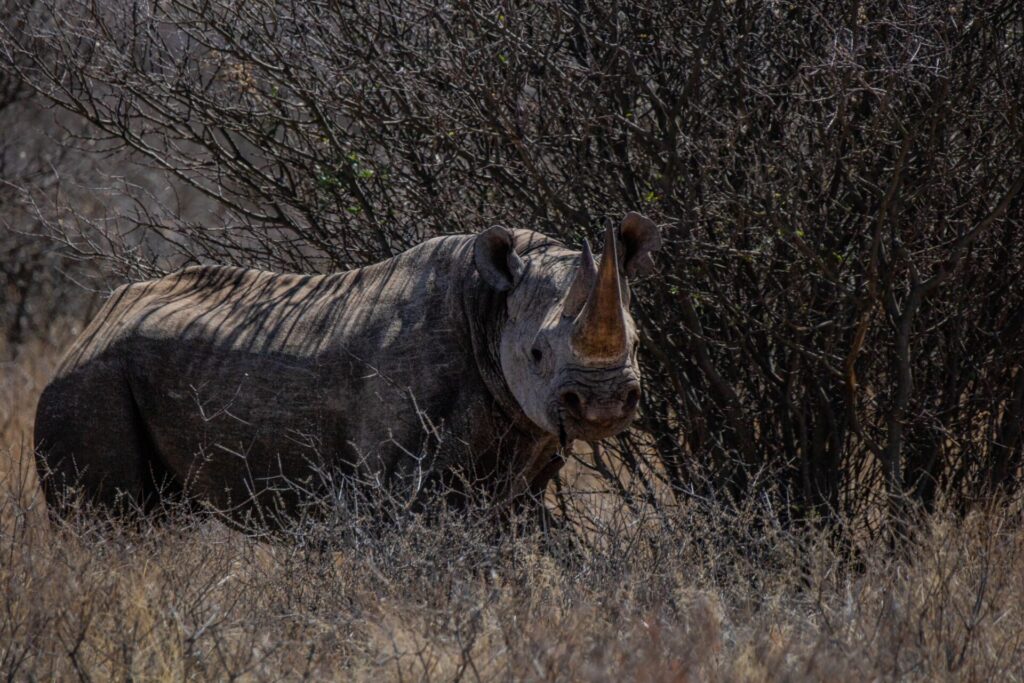
The project spanned two years (2023–2024), during which I spent eight months based at Dedeben, the Tswalu Foundation’s research centre at Tswalu. I was new to the Kalahari when I began – I had not even been to the Northern Cape! Spending extended time on-site allowed me to immerse myself in the environment: to witness its fine details and rhythms, and the landscape transformations from season to season. Harsh as the conditions sometimes were, I quickly fell in love with the burnt-orange sands and the patchy eruptions of delicate flowering forbs after summer rains. It was a rare opportunity to engage with nature both scientifically and with a sense of wonder.
Collecting data meant long hours in the field, backtracking rhino footprints from waterholes into the bush to find fresh dung boluses and sift through them for seeds. I worked closely with Tswalu’s field rangers, a specialised team who monitor black and white rhinos daily, recording their distribution, body condition, and breeding. Their deep knowledge of the bush, honed through years of connection to the Kalahari, made the mornings spent together one of the most profound aspects of my MSc journey. I was struck by the rangers’ extraordinary tracking skills, including the ability to identify some individual rhinos by the crease patterns in their footprints. This collaboration gave the project strong grounding, as the rangers aided me in selecting sample sites distributed to best incorporate the entire black rhino population.
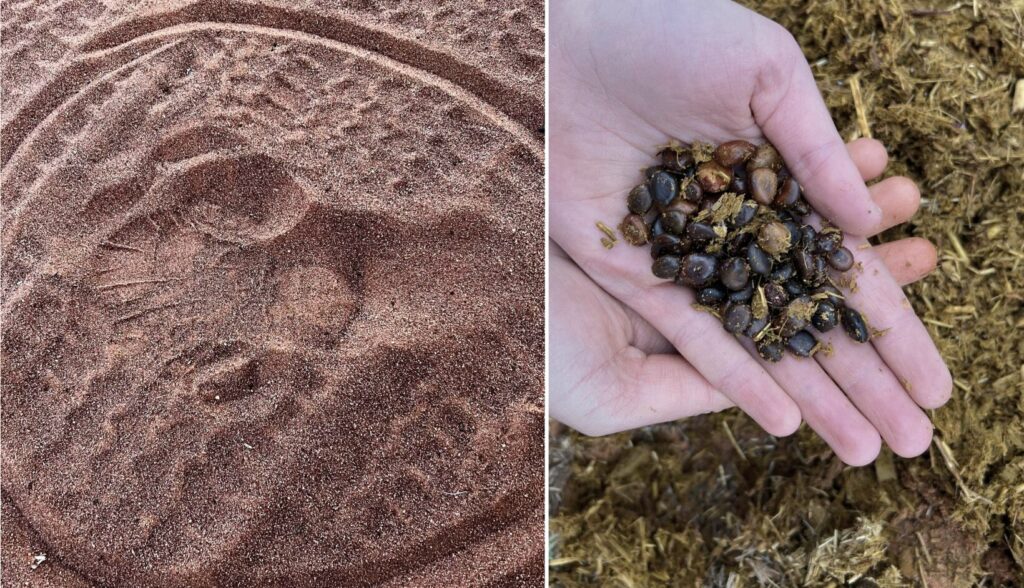
The idea for the project came from a gap in the literature. Most research on seed dispersal by megaherbivores has focused on elephants (Loxodonta africana), with very little known about other species. We speculated that black rhinos may offer ecologically distinct seed dispersal services, particularly for camel thorn, a valuable aspect of the Tswalu landscape.
Camel thorns are considered a keystone species with a host of important ecosystem functions: as nitrogen-fixers, camel thorns improve soil fertility; they provide shade, a rare commodity in arid savannahs; and they produce nutritious pods that sustain a wide variety of animals during the dry season (antelope, baboons and even beetles). Accordingly, camel thorn canopies tend to form biodiversity hotspots for understory plants and small animals. Protecting this tree species may therefore be critical to broader ecosystem health.
Our experiments tested whether seeds ingested by rhinos (dung seeds) germinated better than those from pods on the ground. We also tested whether dung seedlings grew better during early growth, and compared the growth rate of seedlings in rhino dung versus Tswalu sand, before and after simulated herbivory (being clipped).
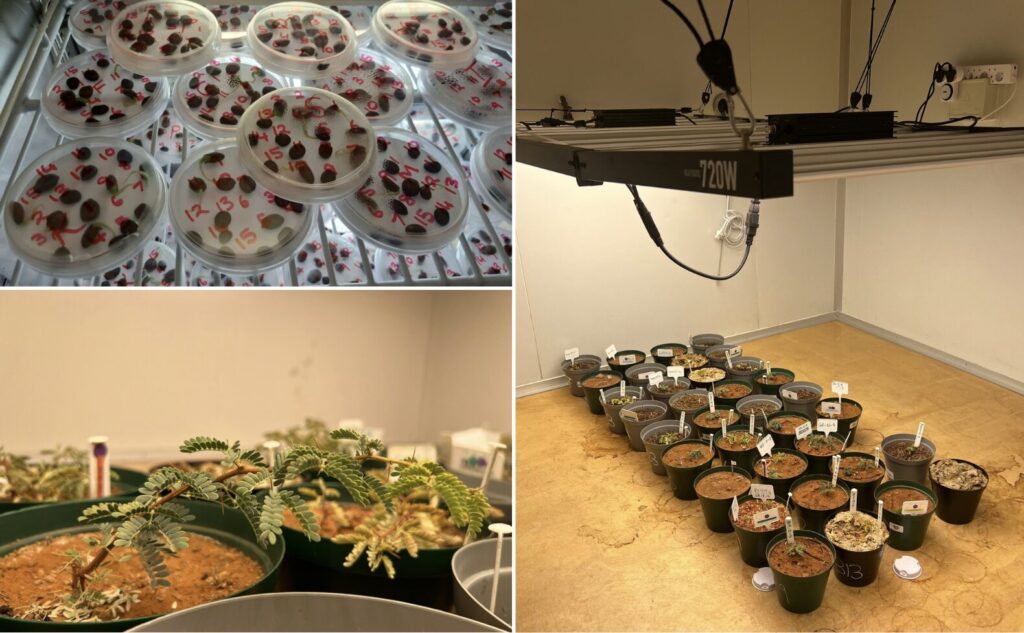
There was immense lab work tedium involved in cracking open pods, counting and pre-treating the seeds, calculating and creating acid solutions, setting up petri dishes, daily monitoring and resealing of dishes in the incubator.
The results showed that seeds passed through black rhinos had a 40% higher germination success and sprouted more quickly compared to pod seeds. The dung seeds also germinated over an extended period (+13 days), producing a seedling cohort with both older individuals and greater age variation. Improved germination likely had to do with heat, acid and enzymes in the rhino gut breaking down the hard exterior of the seeds. Under a microscope, we observed that dung seeds were lighter in colour, swollen and had very visible external fissures compared to the jet-black and seamless pod seeds, which corroborated this theory.
This demographic advantage may increase the probability that seedlings are at a fit stage and emerge within the necessary conditions (e.g. suitable rainfall) to survive. Other growth trials produced less significant results but the germination boost alone is striking.
We cannot yet relate these findings to ecosystem management, as the study focused on a single mechanism – germination. In nature, seedlings must still contend with fire, herbivory, and drought before surviving to maturity. Even so, the results open an important line of enquiry: as massive herbivores, black rhinos may enhance camel thorn recruitment at levels that shape population size and distribution over long timescales. Shifts in camel thorn dynamics could, in turn, affect their multiple ecological functions and even influence broader processes of conservation concern, such as bush encroachment. Given this complexity, further research is needed, and this study represents only a first step toward understanding the long-term impact of black rhinos on the Kalahari’s veld condition.
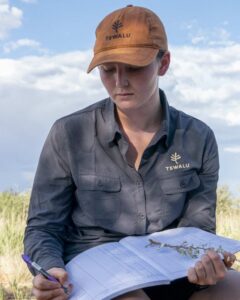
About the author:
Olivia Jones is a recent MSc graduate from Stellenbosch University, where she researched herbivore–vegetation dynamics in the Kalahari. She is currently developing this work into scientific publications while volunteering with the education NPO Lessons in Conservation. Olivia is seeking PhD opportunities, aiming to begin her candidacy in 2026. Her long-term goal is to lead rewilding initiatives that integrate research with socially just implementation, to restore functioning ecosystems while empowering communities to steward resilient landscapes.
Image credits: Olivia Jones and Trevor Kleyn
